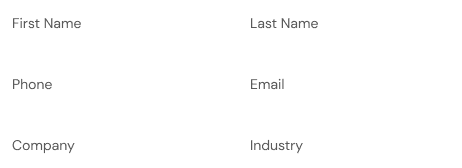
Finding your top-tier remote employee is not the end of your outsourcing journey. Right after the hiring process, you need to catch up with the challenges of paying them. Payroll management is no easy task and complying with the labor code can be complicated. Also, getting an international payroll right and on time requires effort, resources, and expertise. Committing unlawful mistakes can even lead to legal fines and business risks.
So how does a foreign business owner with employees in the Philippines get all these done? That's exactly why we made this guide to help you pay your remote employees right and on time.
What's The Difference Of Paying a Remote Employee vs. a Contractor?
Payroll management is a big task to handle. You need to make sure that the legalities are met while at the same time keeping the company in profit. Moreover, paying for your remote staff in the Philippines requires you to build an entity in the country and comply with legal requirements. This is why some companies prefer hiring contractors to avoid complexities.
However, there is a danger in misclassifying a remote employee from a freelancer or contractor. It is a risk for non-compliance to the Labor Code. Read this article to know more about how you can differentiate an international remote worker from a freelance worker or contractor.

If you want to hire a Filipino remote worker but you find setting up an entity in the Philippines to be too big of a task, you can get help from an Employer of Record (EOR) company like Remotify. We serve as the legal employer in the Philippines for your Filipino employees on your behalf so you can employ and pay them hassle-free without setting up a local entity. We will also handle payroll management and disbursement, making sure you remain compliant with the local regulations.
When Should You Pay Your Filipino Remote Employee?
Your employee should know when he or she will receive their salary. It is your responsibility to ensure that their payment is sent on time. If you have a Filipino team, you need to be aware of the policies and regulations to avoid any possible problems.
The Philippines has specific guidelines on the proper procedure for remitting the salaries of employees. The Labor Code of the Philippines states that the minimum wage rate should be paid not less than once a month. This schedule applies to all kinds of employees regardless of whether they are part-time or full-time employees.
While some prefer paying in a monthly period, most companies choose to pay their employees semi-monthly. If you plan to change your payment disbursement, the employer must provide written notice at least one pay period before implementing a new scheme. The notice should specify the day or days on which the semi-monthly paydays will fall and the wages corresponding to each payday. The employees' consent must be secured in writing through a written application.
You should also note that the Philippine labor code requires that all employees receive a 13th month's pay. This is compensation for employees aside from their annual salary and other benefits. It must be paid on or before December and the computation is stated in the labor code. Providing this for your employees can be crucial for employee retention and acquisition.
What are the different Employee and Employer Contributions in the Philippines?
Employees in the Philippines are covered by several different social security schemes, including the Social Security System (SSS), Pag-Ibig, PhilHealth, and income tax. Contributing to your employees’ mandatory contributions is a standard for every employer who has employees in the Philippines.

However, you don’t have to solely cover all the expenses of paying for the contributions. For example, your employee is solely liable for paying their withholding taxes although employers are expected to report them to the Bureau of Internal Revenue (BIR).
For the SSS contribution, the computation should be 12% of the total monthly salary of the employee. 60% of this must be paid by the employer and 40% of this must be paid by the employee. Meanwhile, Philhealth's contribution should be 2.75% of the employee’s monthly salary and the computations should be 50%-50%.
The monthly contribution for Pag-Ibig is 3% of the basic monthly salary of an employee which is capped at Php 60,000 for both the employer and the remote worker.
*Note: Some of this may change depending on the mandate of the Philippine government and the Department of Labor and Employment (DOLE).
I want to do all these but how can I do it conveniently, remotely, and hassle-free?
Partner with a reliable Employer of Record (EOR) company like Remotify. Paying your Filipino remote worker can be complicated and costly. However, everything would be worth it once you realize the benefits of employing these top-tier talents. You may even find that the return of making sure your employees are happy and secure with their remote job far outweighs the cost of making sure their employment is compliant.
If you are looking for a convenient way to stay compliant, secure your team in the Philippines, and pay them right and on time, check out our website or schedule an appointment with us today.
Jump straight to a key chapter
Spending Too
Much Time
Onboarding?
your remote hiring in the
Philippines, excellently.
Say Goodbye to High Costs!
Request Your Free Consultation Today andSave a Massive 70% on Your Workforce!

Ready to thrive in a remote-first work environment?


